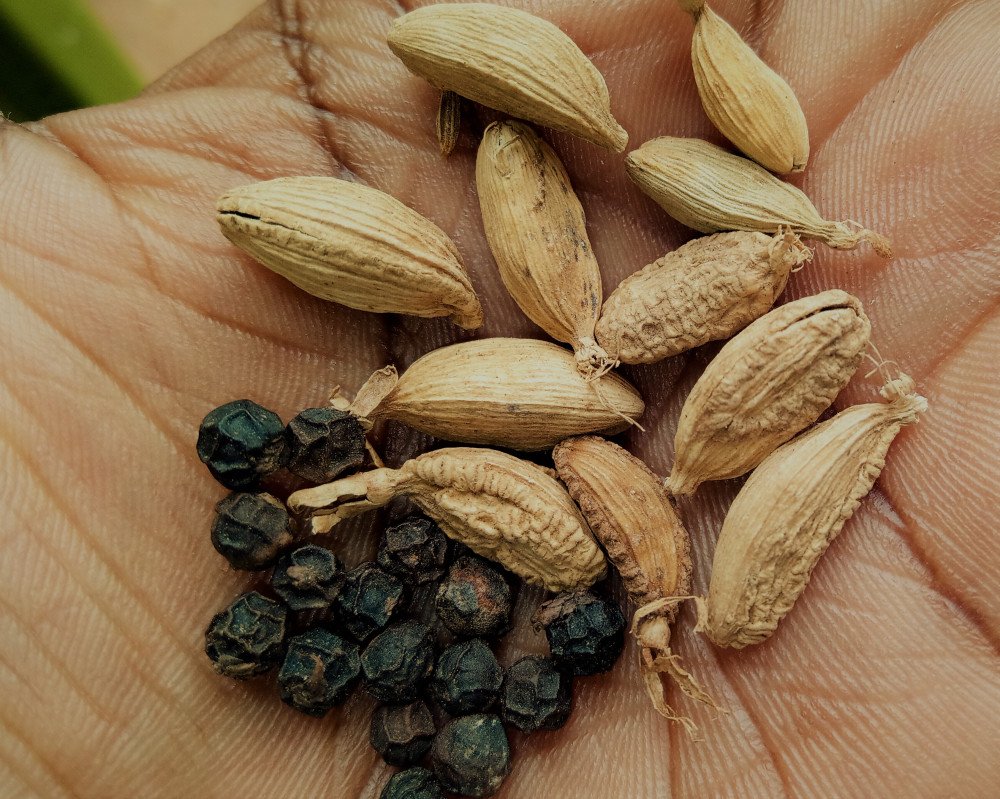We are at a friend’s house and she serves us some tea and then one of us exclaims! "This chai is very tasty, what’s in it?" 'Cardamon and some tangawizi (ginger)' she replies. Cardamom? No cardamon this time even louder. And that is how I ended up wanting to write this chapter so much, because I knew that debate on pronunciation would be long: After all I grew up knowing cardamom is used in preparation of pilau rice (spiced rice).
Cardamom in chai? Well it does pack some marvelous taste as an ingredient in chicken curry. Whether it's cardamon, cardamom or cardamum. All these three names represent the same thing, a spice made from several seeds that are native to the Indian subcontinent and Indonesia. Indians call it Elakkai and Iliki is its Swahili name, notice the borrowed words.
The spice was introduced in the East African coastal region by Indian merchants during trade, thus you’ll find the spice more prevalent in Swahili cuisine. The earliest record of the merchants’ presence in the region was by Vasco Da Gama in the late 15th century, this also means they could have been here earlier than this record.
As you journey inland, over time, Inland African natives picked it up and we now use it, in our foods, in preparation of masala chai: with ginger and cardamom, and as an ingredient in a local specialty drink, dawa, (boiled ginger, cardamom, garlic) used for in traditional medicinal practice to ease colds and flu.
After Spending more time in the kitchen, I have learned that there are different types of cardamom. The green cardamom and the black cardamom.
Green cardamom is the most highly prized kind. It is a bushy herb of the ginger family native to southwest India. It’s cultivated extensively there and in Guatemala, now the world’s largest exporter; Costa Rica, Tanzania, and Sri Lanka are the other top producers. The plants grow in clusters of slender stalks about 10 feet tall with large, lance-shaped leaves.
The spice pods, which grow on shoots at the plant’s base, are ready for harvest 30 to 40 days after flowering and are picked when they are just ripening, and then dried under the sun (causes them to bleach and turn white) or in a kiln (causes them to stay green), otherwise, they split and release their seeds.
The pods themselves are odorless and tasteless; it is the seeds that are tasty and nice-smelling. They contain the various compounds we experience as sweet, floral, and eucalyptus-like. That unique balance works as well in savory dishes as it does in sweet ones.
Black cardamom is a spice native to the Himalayas and cultivated today in Nepal, India, China, and Bhutan. It has larger, deeply ridged pods that are dried over wood fires. As a result, the pods take on a dark brown color and a bold, smoky flavor that would overwhelm a sweet cake or pudding, but in a spice rub for roasted meat or in a full-flavored stew it imparts a smoldering depth no other spice can.
Used together in a single dish, such as in chicken curry, green and black cardamom can harmonize beautifully. I’ve learned, too, about similarly fragrant relatives of cardamom, including delicate, floral Thai cardamom and peppery West African grains of paradise.
Green cardamom is used as a spice for sweet dishes as well as traditional flavoring in coffee and tea. In South Asia, green cardamom is often used in traditional Indian cuisine, sweets and in Masala chai (spiced tea). It can also be used in spice blends, follow the link below it will lead you to a pictorial example.
Cardamom is rich in flavor, thus greatly improves the taste of your food, here are more reasons why you should incorporate this spice as a regular in your diet.
- Aids digestion, cardamom is rich in fiber which helps in digestion.
- Helps to eliminate respiratory problems
- Helps to detoxify the body
- Improves immune system
- Maintains good oral hygiene
- Stress reliever




Add your reply
Replies